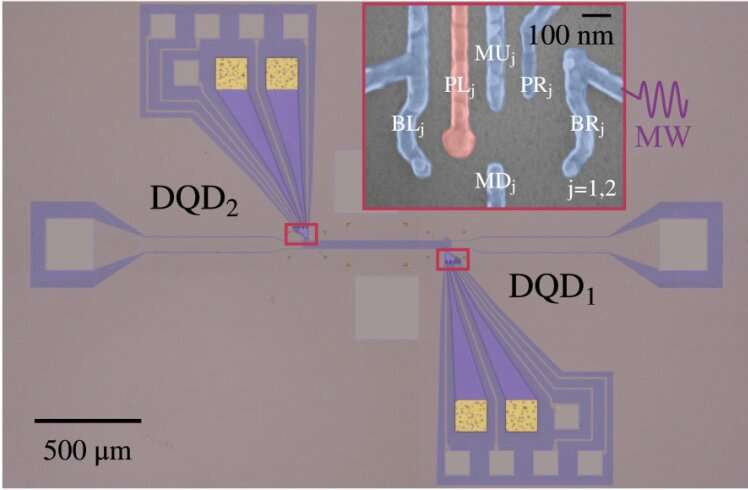This article has been reviewed according to Science X's editorial process and policies. Editors have highlighted the following attributes while ensuring the content's credibility:
fact-checked
peer-reviewed publication
trusted source
proofread
New theory for a periodically driven quantum dot–cavity system

A team led by Prof. Guo Guoping and Prof. Cao Gang from the University of Science and Technology of China (USTC) of the Chinese Academy of Sciences (CAS), collaborating with Sigmund Kohler from Materials Science Institute of Madrid, have developed a response theory applicable to strongly coupled and multiqubit systems. Their study was published in Physical Review Letters.
Semiconductor quantum dots (QD) strongly coupled to microwave photons are key for investigating light-matter interactions. In previous studies, the team used a high-impedance super-conducting resonant cavity to implement the strong coupling of the QD–cavity hybrid system. Based on this strong coupling, the team further studied the circuit quantum electrodynamics (cQED) of the periodically driven, strongly coupled hybrid system.
In this study, the researchers first prepared a composite device with a high-impedance resonant cavity integrated with two double quantum dots (DQD). By probing the microwave response signal of the DQD-cavity hybrid system under periodic driving, they found that the existing theory for dispersive cavity readout fails due to the enhancement of the coupling strength.
Therefore, the researchers developed a new response theory that treats the cavity as a part of the driven system. Using this theory, they successfully simulated and interpreted the signals in the experiment and further investigated the case of two-DQD-cavity hybrid system under periodic driving.
This study furthers our understanding of periodically driven QD–cavity hybrid systems. In addition, the theoretical approach developed is not only applicable to hybrid systems with different coupling strength but also can be extended to multiqubit systems.
More information: Si-Si Gu et al, Probing Two Driven Double Quantum Dots Strongly Coupled to a Cavity, Physical Review Letters (2023). DOI: 10.1103/PhysRevLett.130.233602
Journal information: Physical Review Letters
Provided by Chinese Academy of Sciences




















